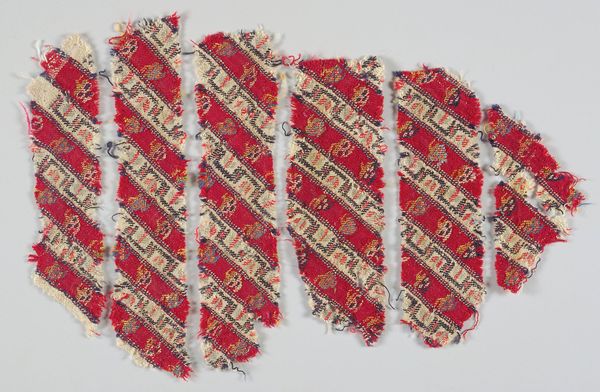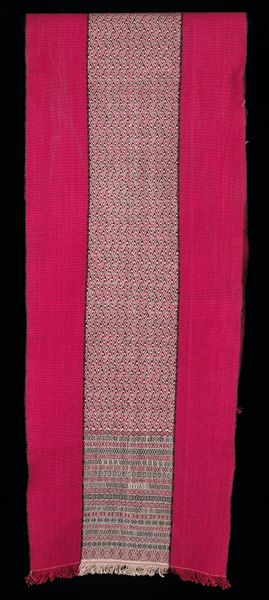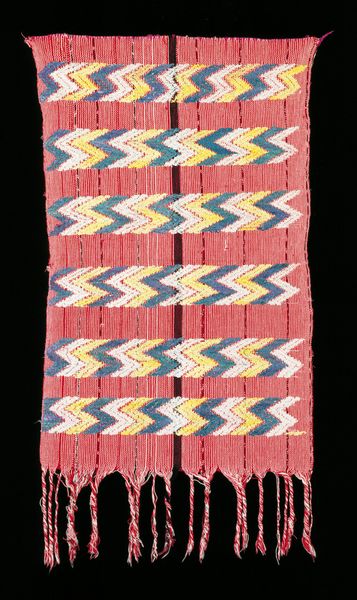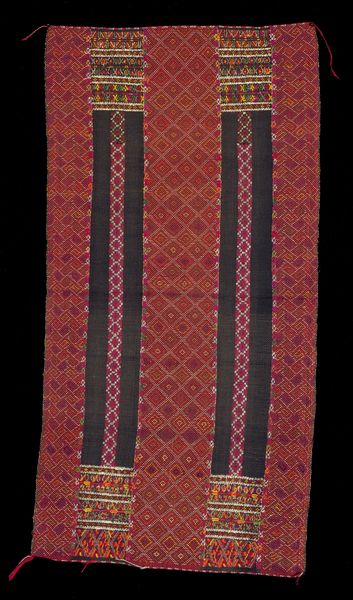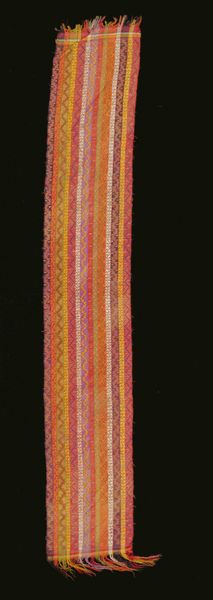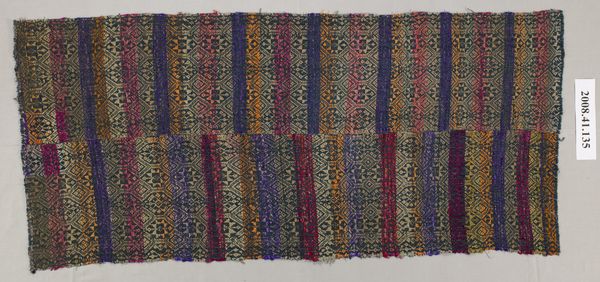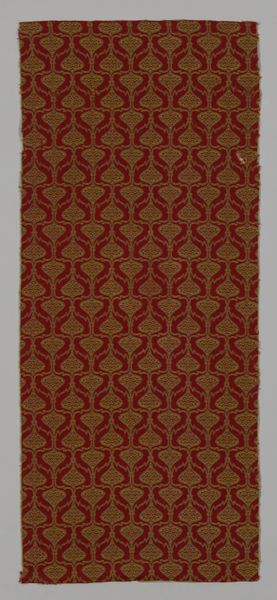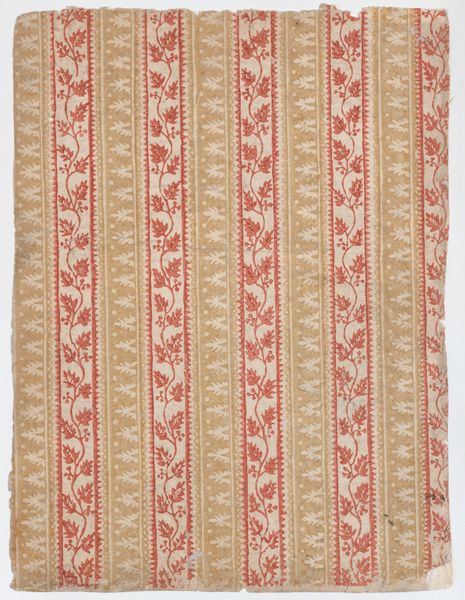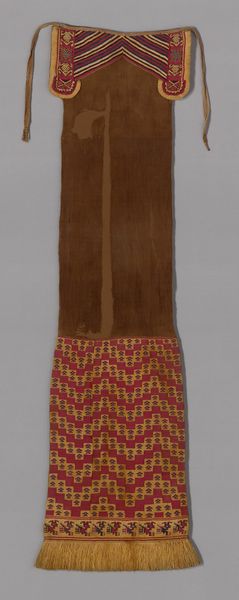
textile
#
textile
#
fashion and textile design
#
hand-embroidered
#
pattern design
#
repetitive shape and pattern
#
regular pattern
#
pattern repetition
#
textile design
#
imprinted textile
#
layered pattern
#
combined pattern
Dimensions: 15 3/4 x 5 1/2 in. (40.01 x 13.97 cm)
Copyright: Public Domain
Editor: We're looking at "Bias Cut Fragments," dating back to the 19th century. These strips of patterned textile reside at the Minneapolis Institute of Art. They feel incomplete, like snippets of something larger, yet the intricate wool patterns are really striking. What can you tell me about them? Curator: For me, this work speaks volumes about materiality and labor. Consider the means of production here. The wool itself, the dyes, the weaving – each step represents human effort, most likely by women working within the domestic sphere or in textile mills. The "bias cut" you mentioned also offers insight. It suggests a consciousness of fashion and textile design, of how fabric drapes and moves. Editor: That makes sense. So, it’s less about pure aesthetics and more about the social context of its creation? Curator: Precisely. The "fragments" invite questions: Were these remnants from a larger garment or textile? What was the intended use? Its incompleteness challenges the traditional art historical focus on finished masterpieces, directing our attention to the processes, materials, and lives intertwined with its creation and potential consumption. Do you think the pattern itself tells us something? Editor: Possibly. The repeating shapes do lend it a manufactured or printed impression, despite seeming hand-worked up close. So is the piece about elevating functional textiles as art objects? Curator: Partially. It's more about recognizing that textiles, often relegated to craft, were essential components of daily life, reflecting cultural values, economic structures, and gender roles. This challenges that artificial distinction. Editor: So, understanding the textile's origins adds so much meaning to it, changing it from just an anonymous design into something quite profound. Thanks. Curator: And considering the repetitive patterns alongside the fragmented state allows us to see both the artistry and the industry. Always more to learn.
Comments
No comments
Be the first to comment and join the conversation on the ultimate creative platform.

